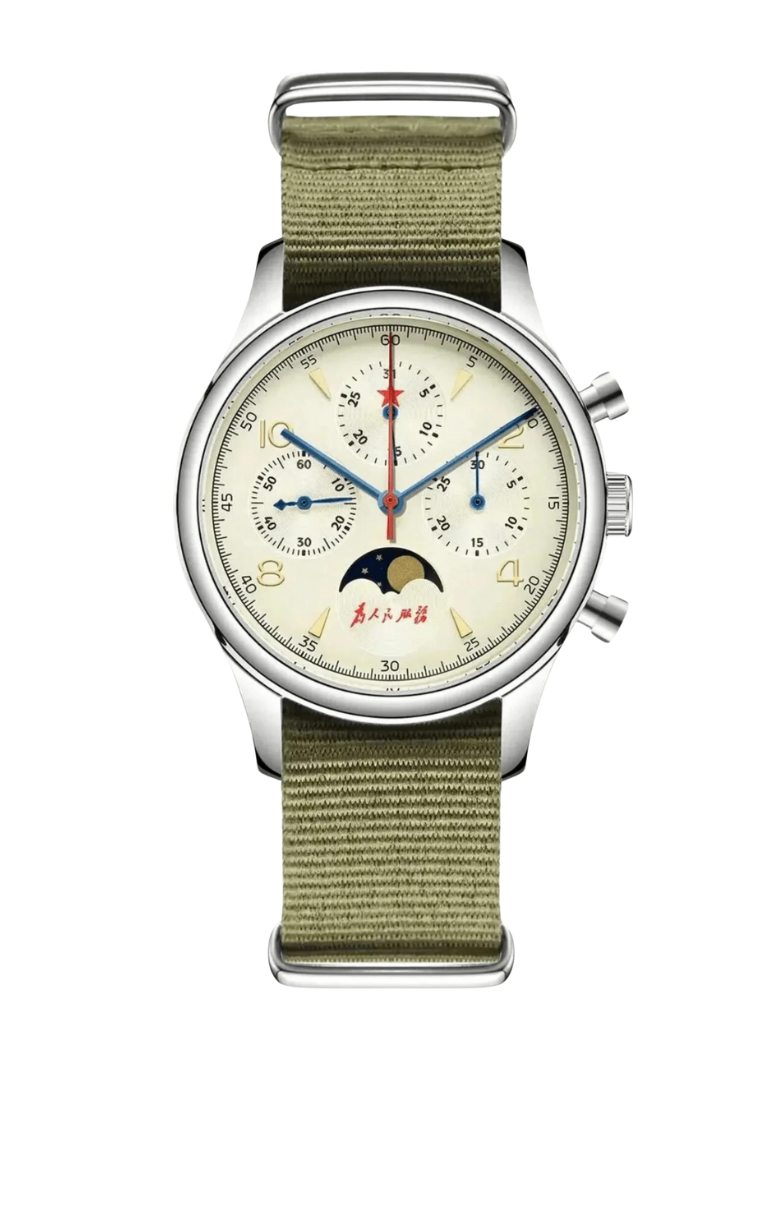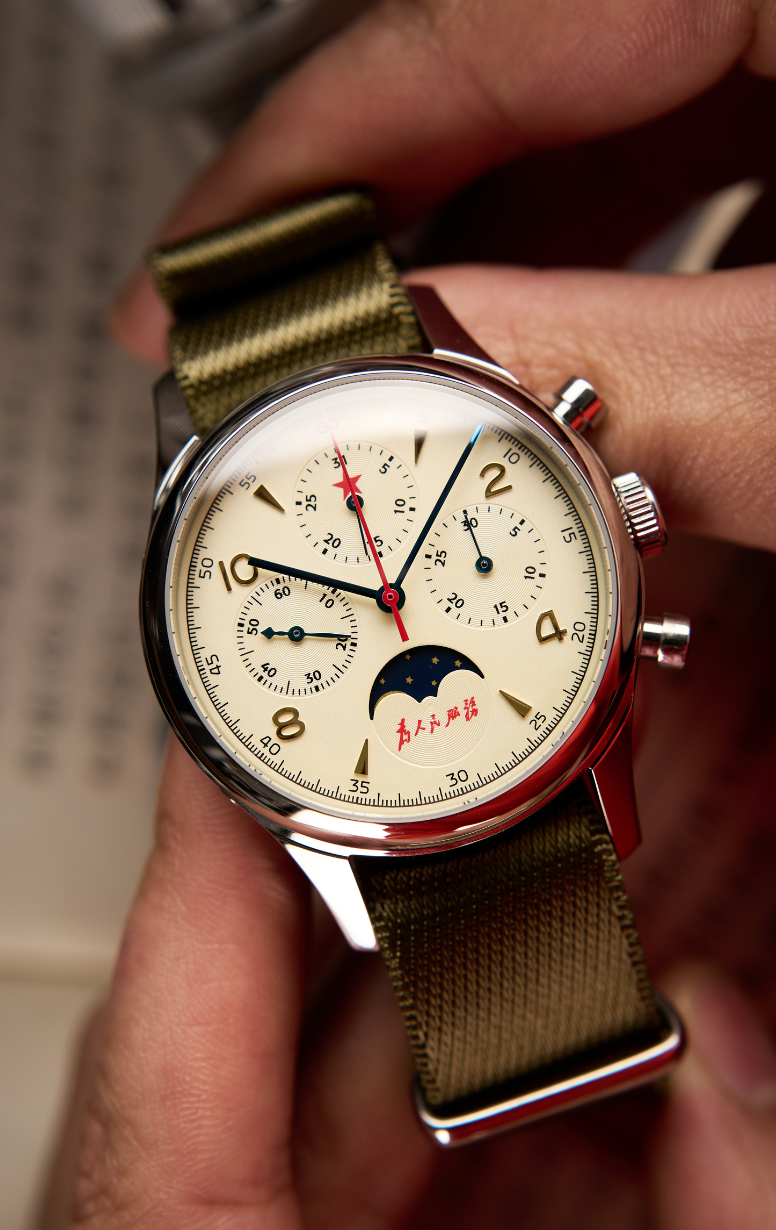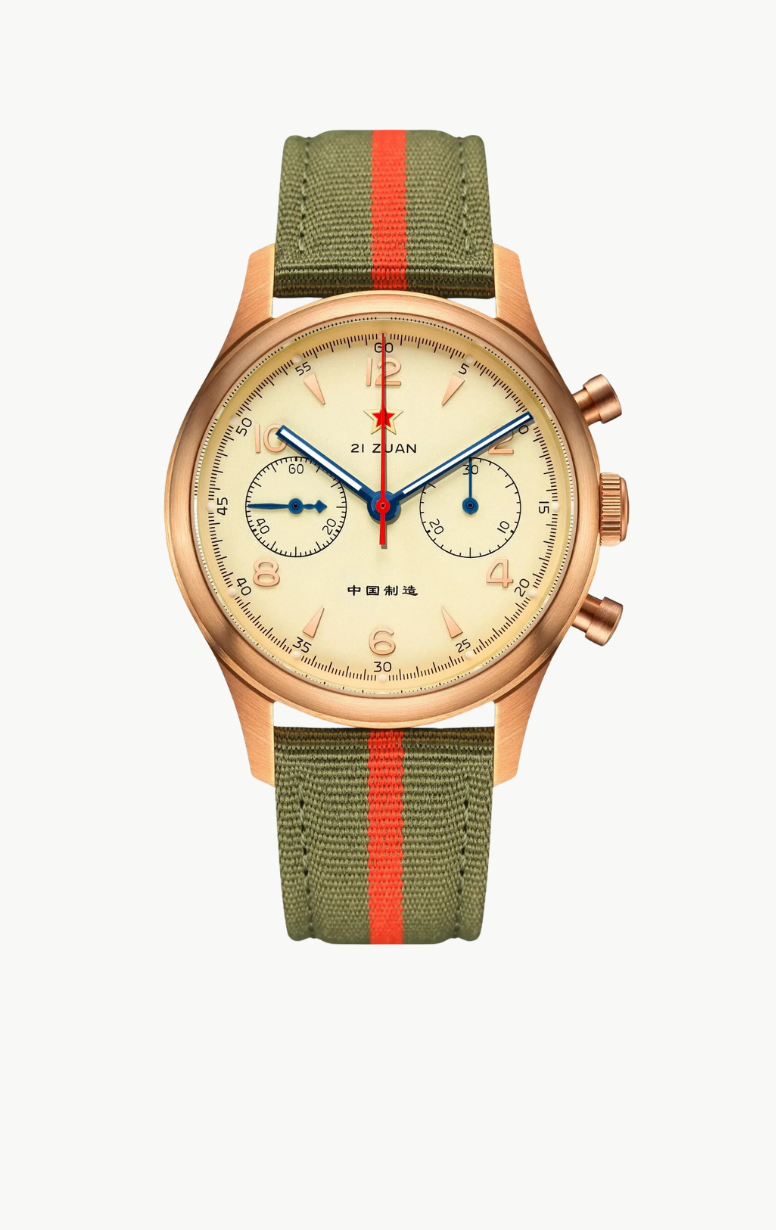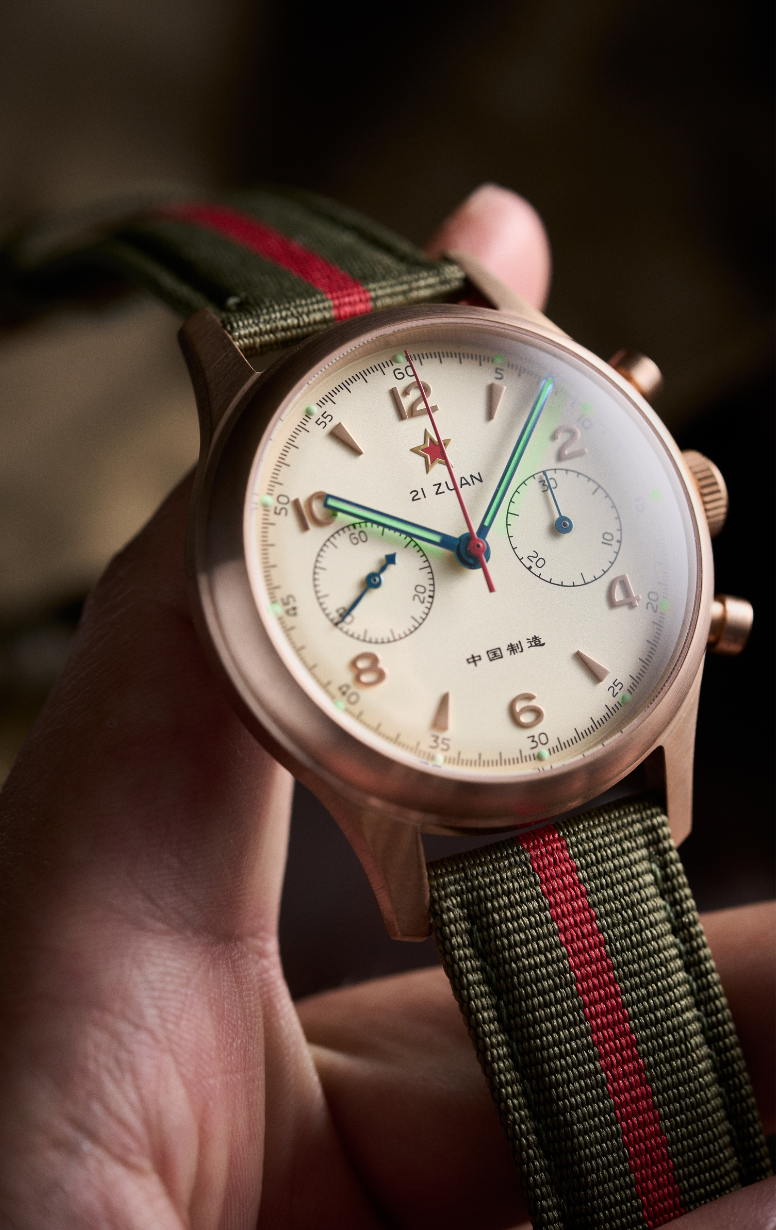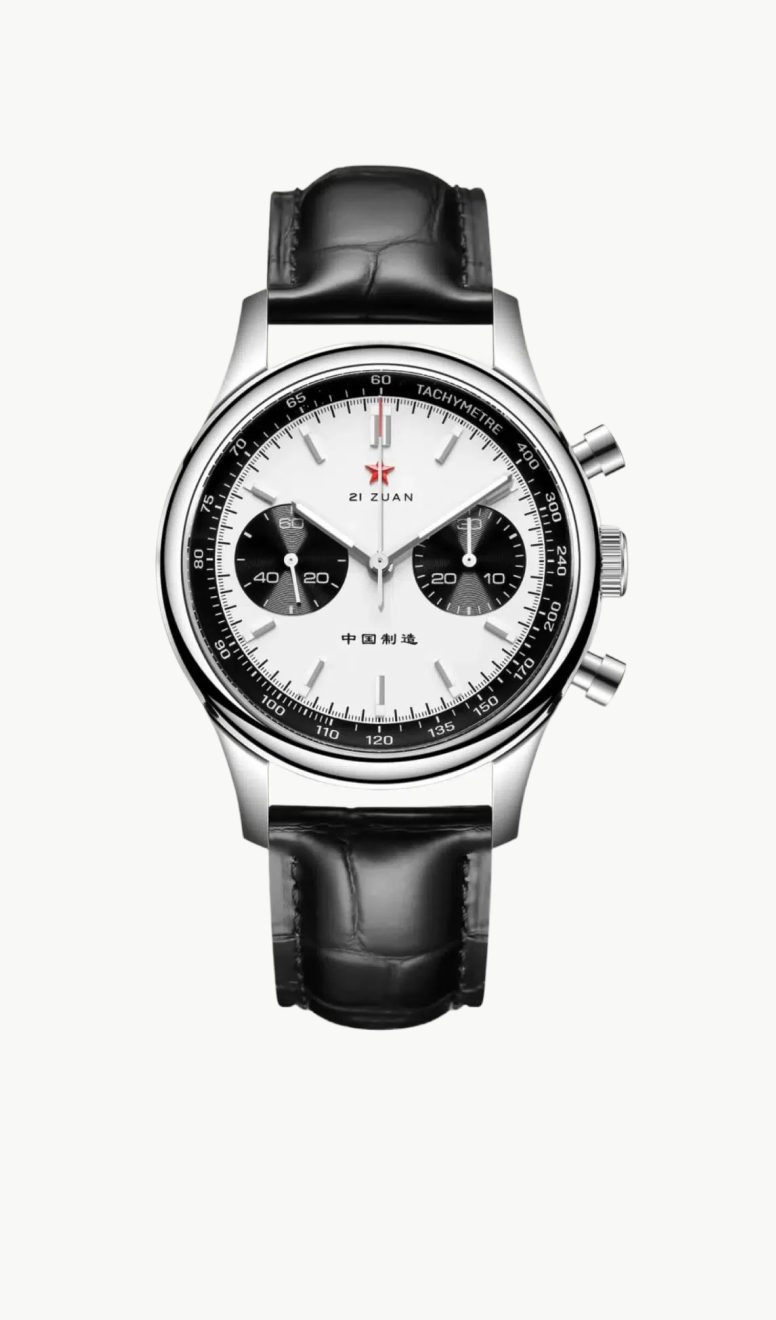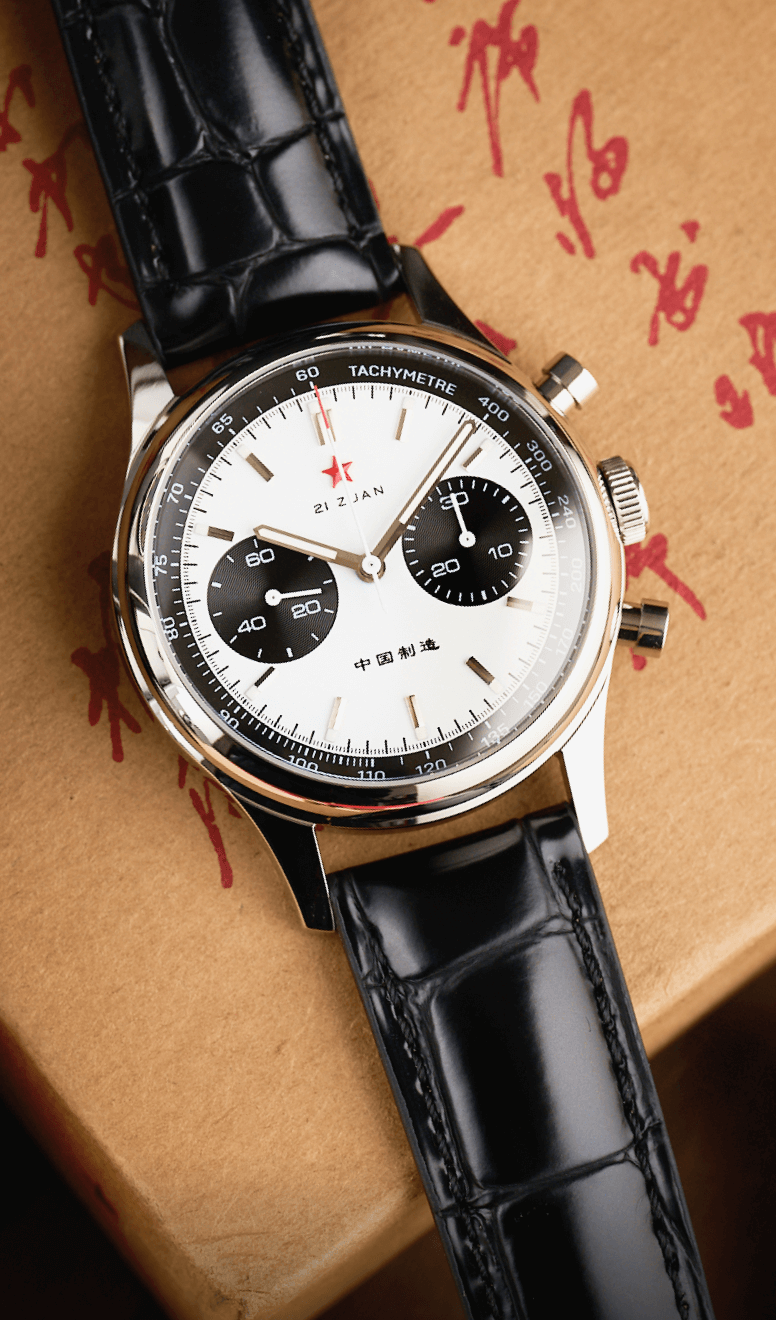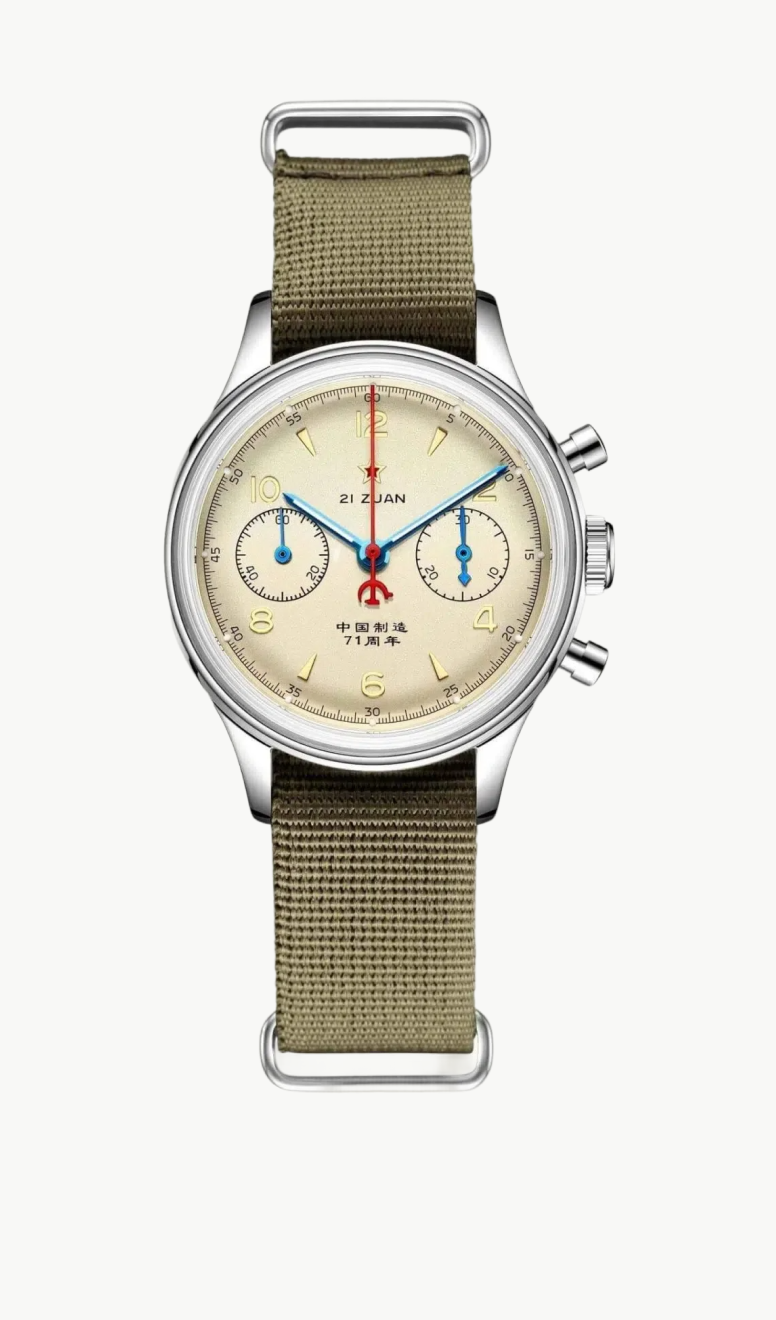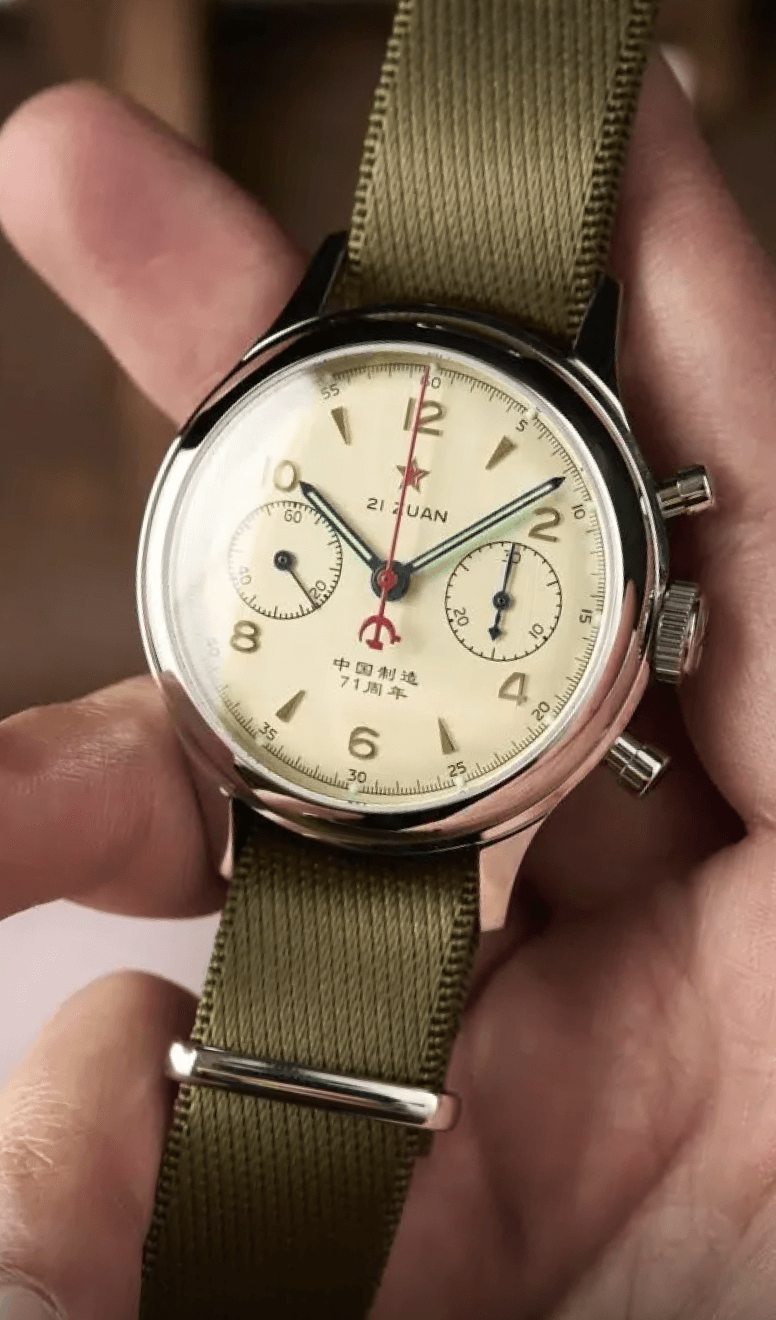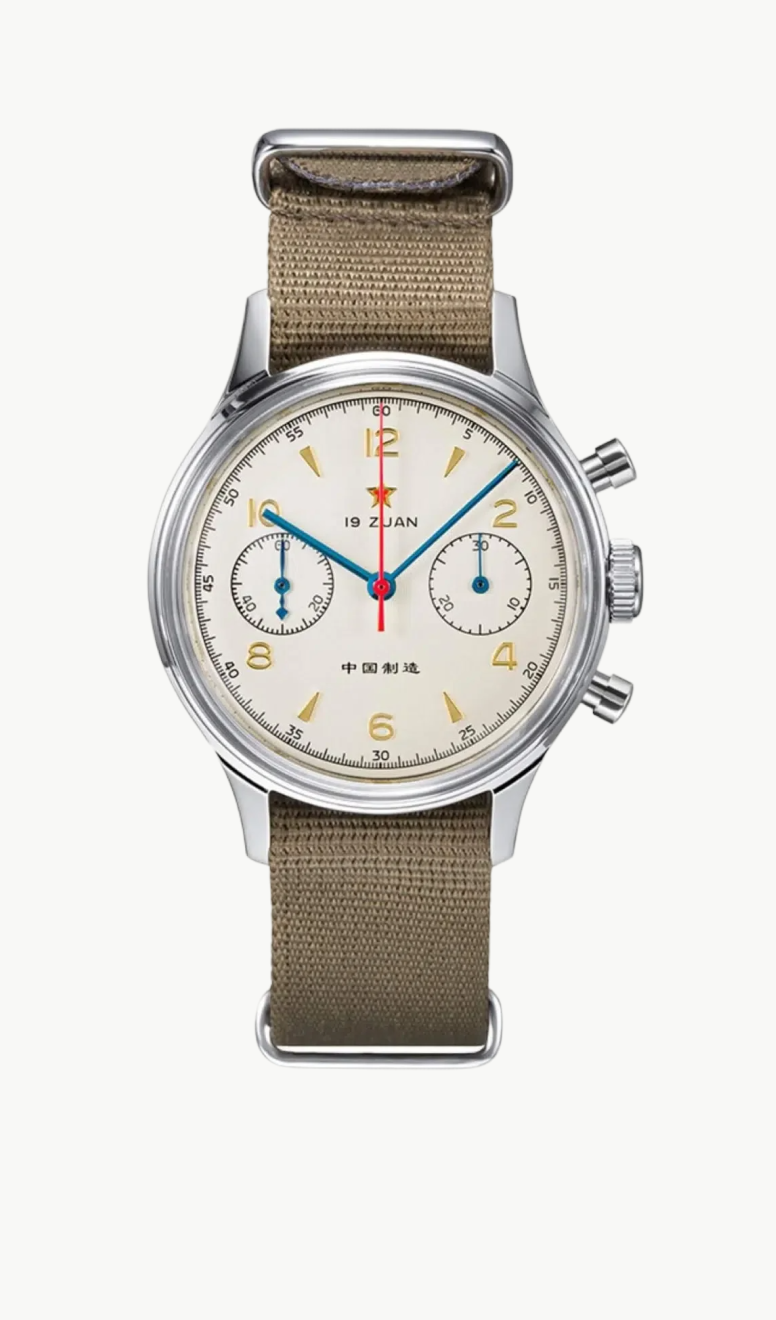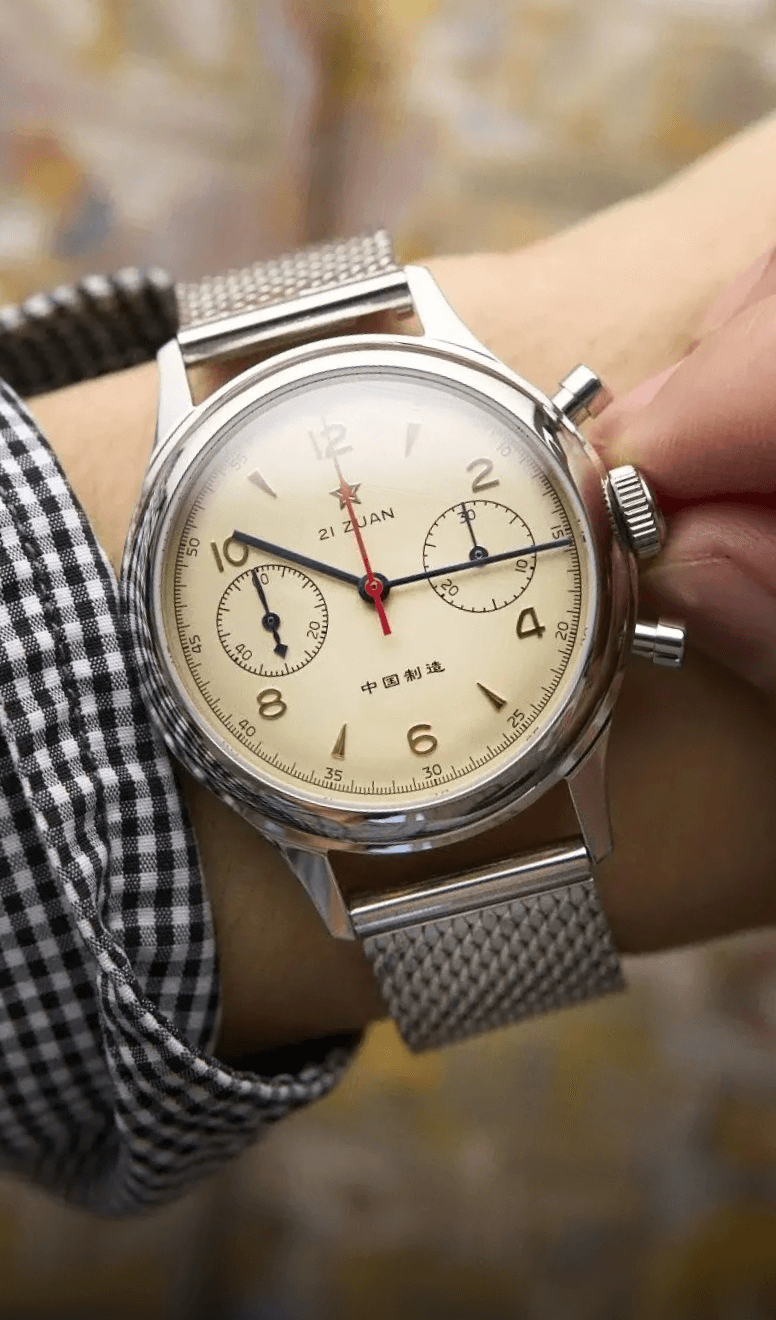From its inception, the Seagull 1963 Pilot’s Chronograph was a sophisticated design that predated the modern watch designs of today.
The iconic Seagull 1963 Pilot’s Chronograph has been discussed at length in several articles and media. However, even with all that coverage, much of its history can still be expanded on. But then again, we are talking about communist China almost 60 years ago. The type of communism back then and what we see today can hardly be fitted in the same sentence, let alone in the same conversation.
Therefore, we decided to reach out to Mr. Zhang Yue, a previous watchmaker with Seagull. Today, he is a trader that brought the original Seagull 1963 Pilot’s Chronograph to our shop’s line-up.
Here’s how it all began.
The history of the Seagull 1963 Pilot’s
In January 1955, the communists were victorious in their clash with KMT and came to power in China. At that time, there weren’t any watchmaking shops in Tianjin City, just one four-person watch-repair crew. Zhang, Wang, Sun, and Jiang were skillful craftsmen, but they have never made a wristwatch on their own.
But when your comrades come knocking on your door and tell you that it is your responsibility to figure out how to manufacture wristwatches, you don’t say no. Instead, you only ask how much time you have and what your budget is.
They had tough luck because they had only 100 days to create a watch manufacturing plan while on a very tight budget.
Regardless, with almost no machinery at their disposal and with a Swiss Sindaco to learn from, they managed to figure out how to recreate and produce each part. Against all odds, history was made on 24 March 1955, as the first wristwatch made in China was launched.
Everyone was so pleased with the wristwatch that they added a five-point star to the dial as a form of decoration. The same star that is centered on the national flag also decorated the dial. As a result of that, the watch got its name – “Wu Xing” – which refers to “five planets” or “five processes”.
Many people might be surprised to learn that the design team’s craftsmen’s shop was called “Huawei,” like the famous smartphone producer, which translates as “the formidable.”
Thanks to the success of their design, the celebrated Tianjin Watch Factory began operations in 1955. The name was officially used in 1957, whereas the official registration and recognition under that name happened on January 5th of 1962. That marked the beginning of a new era in which the factory began its massive expansion, aided by generous State funding.
More highlights were set to follow in the years to come. In April 1961, the PRC made a commission filed as “D304″for the Chinese Air Force, with the added goal of decreasing the country’s need for foreign supplies. Again, it was in a tumulus period. The Second World War was over, and the world was at odds. Countries were divided into two blocks, a communist’s block and a capitalist’s block. Due to that, international relationships were quite hostile.
In this environment, the ‘63 Chronograph inception took root with final prototypes that matched military standards. Produced in October 1965.
In October 1966, 1,400 units were sent to their new owners serving in the front lines. Because these were officially military supplies, not many of them were publically available. Back then, that wasn’t anything strange, considering that it was a state-controlled economy. Further down the line, various batches from the same series came with different crowns and hour-markers. Again, no one argued about that.
The truth is, “brand” was a new concept that didn’t apply in any way to China. At least, that was the case for the years between 1955 and 1965, when each factory was state-controlled. However, things changed once the factory started exporting its watches. That’s when things such as image and brand started to bear any meaning.
Fast-forward to 1973, and we get to a moment when the Chinese premier agreed to sign permission that enabled them to export their “East Wind” (Dong Feng) watch. The difference was that the East Wind got introduced to the world under the Seagull brand. The idea with the name Seagull was to be a metaphor for endurance, resilience, and determination.
With all that said about these watches and how they came to be, one cannot stop wondering – why the ’63 Chronograph out of nowhere is now a Seagull? Well, this is the same Dong Feng watch, just reused and repurposed. Then the Seagull Group was subsumed in ’97 along with four joint ventures and sixteen manufacturers. So yes, the Group consists of twenty-plus parties, including those allowed to make the watches under a license agreement.
Consequently, the Group reclaimed the chronograph and re-launched it in 2007. At first, there was a single batch of only 208 units, shortly after another run of 500 units. The ST3’s genuine beating heart got replaced by ST19.
The watches were a massive hit on the market which means mass production kept going. Several versions were released between 2007 and 2013. In 2013, the ’63s 50th anniversary was marked with the introduction of a limited series of the ’63 Seagull.
Truth to be told, except for the anniversary edition, as well as one or two more, many others were “not quite legit.” They were not entirely counterfeiting as inside, each of them was propelled by the good old ST19. To further elaborate on that, Seagull is also a movement maker. That means genuine ST19s are readily available for everyone out there, counterfeiters included.
Now, let’s check out some of the watches that one can find on eBay:
Distinguishing between the real Seagull and copies
The original Seagull watch, the same as those sold by Mr. Zhang, who was once a Seagull watchmaker himself and today is a licensed watch trader, has its dials marked with “China Tianjin Watch Factory.” However, there are fake ones whose dial is marked with “China Tianjin” and “China Made.” The fake ones are marked like that so that they can avoid potential infringements.
Certain fake models even feature characters that are not properly engraved. Nevertheless, it is pretty obvious that these are meant for the international market, not the domestic one.
However, the “China Made” markings on the D304 Plan B 1962 are an exception, as there is a ’62 model, and you likely haven’t heard about it. This is a prototype that was developed in the early years of the factory. The deal with this one is that Seagull got those blueprints from its archives and produced a limited line of only 640 units. With that model, they celebrated their 65th anniversary and It released this model in 2020. The differences are quite evident – the special font and the dial rings provide a more modern style.
This history of the 1963 truly is an exceptional journey and is sure to inspire collectors who support timepieces with an authentic, rich background.
From its inception, the Seagull 1963 Pilot’s Chronograph was a sophisticated design that predated the modern watch designs of today.
The iconic Seagull 1963 Pilot’s Chronograph has been discussed at length in several articles and media. However, even with all that coverage, much of its history can still be expanded on. But then again, we are talking about communist China almost 60 years ago. The type of communism back then and what we see today can hardly be fitted in the same sentence, let alone in the same conversation.
Therefore, we decided to reach out to Mr. Zhang Yue, a previous watchmaker with Seagull. Today, he is a trader that brought the original Seagull 1963 Pilot’s Chronograph to our shop’s line-up.
Here’s how it all began.
The history of the Seagull 1963 Pilot’s
In January 1955, the communists were victorious in their clash with KMT and came to power in China. At that time, there weren’t any watchmaking shops in Tianjin City, just one four-person watch-repair crew. Zhang, Wang, Sun, and Jiang were skillful craftsmen, but they have never made a wristwatch on their own.
But when your comrades come knocking on your door and tell you that it is your responsibility to figure out how to manufacture wristwatches, you don’t say no. Instead, you only ask how much time you have and what your budget is.
They had tough luck because they had only 100 days to create a watch manufacturing plan while on a very tight budget.
Regardless, with almost no machinery at their disposal and with a Swiss Sindaco to learn from, they managed to figure out how to recreate and produce each part. Against all odds, history was made on 24 March 1955, as the first wristwatch made in China was launched.
Everyone was so pleased with the wristwatch that they added a five-point star to the dial as a form of decoration. The same star that is centered on the national flag also decorated the dial. As a result of that, the watch got its name – “Wu Xing” – which refers to “five planets” or “five processes”.
Many people might be surprised to learn that the design team’s craftsmen’s shop was called “Huawei,” like the famous smartphone producer, which translates as “the formidable.”
Thanks to the success of their design, the celebrated Tianjin Watch Factory began operations in 1955. The name was officially used in 1957, whereas the official registration and recognition under that name happened on January 5th of 1962. That marked the beginning of a new era in which the factory began its massive expansion, aided by generous State funding.
More highlights were set to follow in the years to come. In April 1961, the PRC made a commission filed as “D304″for the Chinese Air Force, with the added goal of decreasing the country’s need for foreign supplies. Again, it was in a tumulus period. The Second World War was over, and the world was at odds. Countries were divided into two blocks, a communist’s block and a capitalist’s block. Due to that, international relationships were quite hostile.
In this environment, the ‘63 Chronograph inception took root with final prototypes that matched military standards. Produced in October 1965.
In October 1966, 1,400 units were sent to their new owners serving in the front lines. Because these were officially military supplies, not many of them were publically available. Back then, that wasn’t anything strange, considering that it was a state-controlled economy. Further down the line, various batches from the same series came with different crowns and hour-markers. Again, no one argued about that.
The truth is, “brand” was a new concept that didn’t apply in any way to China. At least, that was the case for the years between 1955 and 1965, when each factory was state-controlled. However, things changed once the factory started exporting its watches. That’s when things such as image and brand started to bear any meaning.
Fast-forward to 1973, and we get to a moment when the Chinese premier agreed to sign permission that enabled them to export their “East Wind” (Dong Feng) watch. The difference was that the East Wind got introduced to the world under the Seagull brand. The idea with the name Seagull was to be a metaphor for endurance, resilience, and determination.
With all that said about these watches and how they came to be, one cannot stop wondering – why the ’63 Chronograph out of nowhere is now a Seagull? Well, this is the same Dong Feng watch, just reused and repurposed. Then the Seagull Group was subsumed in ’97 along with four joint ventures and sixteen manufacturers. So yes, the Group consists of twenty-plus parties, including those allowed to make the watches under a license agreement.
Consequently, the Group reclaimed the chronograph and re-launched it in 2007. At first, there was a single batch of only 208 units, shortly after another run of 500 units. The ST3’s genuine beating heart got replaced by ST19.
The watches were a massive hit on the market which means mass production kept going. Several versions were released between 2007 and 2013. In 2013, the ’63s 50th anniversary was marked with the introduction of a limited series of the ’63 Seagull.
Truth to be told, except for the anniversary edition, as well as one or two more, many others were “not quite legit.” They were not entirely counterfeiting as inside, each of them was propelled by the good old ST19. To further elaborate on that, Seagull is also a movement maker. That means genuine ST19s are readily available for everyone out there, counterfeiters included.
Now, let’s check out some of the watches that one can find on eBay:
Distinguishing between the real Seagull and copies
The original Seagull watch, the same as those sold by Mr. Zhang, who was once a Seagull watchmaker himself and today is a licensed watch trader, has its dials marked with “China Tianjin Watch Factory.” However, there are fake ones whose dial is marked with “China Tianjin” and “China Made.” The fake ones are marked like that so that they can avoid potential infringements.
Certain fake models even feature characters that are not properly engraved. Nevertheless, it is pretty obvious that these are meant for the international market, not the domestic one.
However, the “China Made” markings on the D304 Plan B 1962 are an exception, as there is a ’62 model, and you likely haven’t heard about it. This is a prototype that was developed in the early years of the factory. The deal with this one is that Seagull got those blueprints from its archives and produced a limited line of only 640 units. With that model, they celebrated their 65th anniversary and It released this model in 2020. The differences are quite evident – the special font and the dial rings provide a more modern style.
This history of the 1963 truly is an exceptional journey and is sure to inspire collectors who support timepieces with an authentic, rich background.




